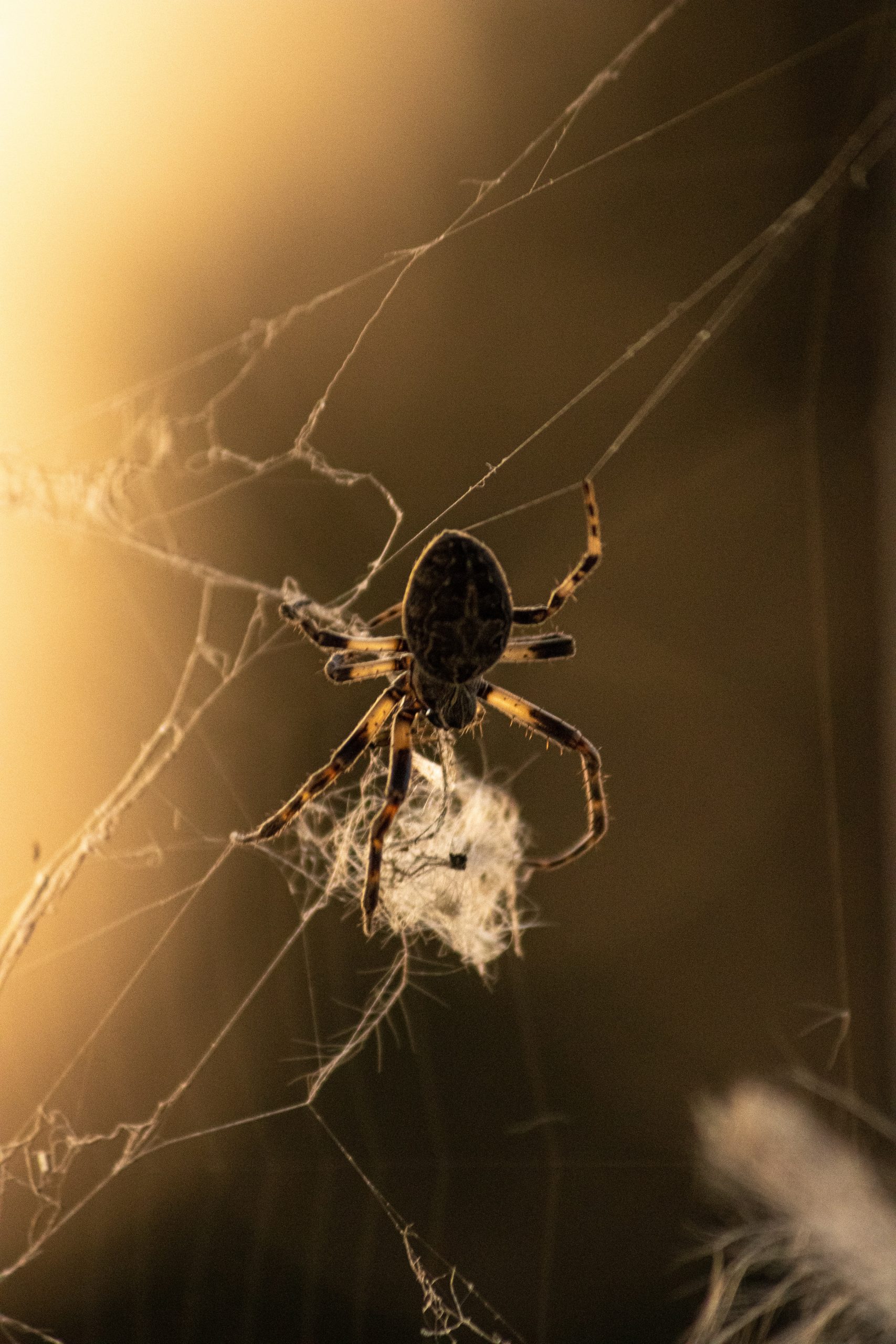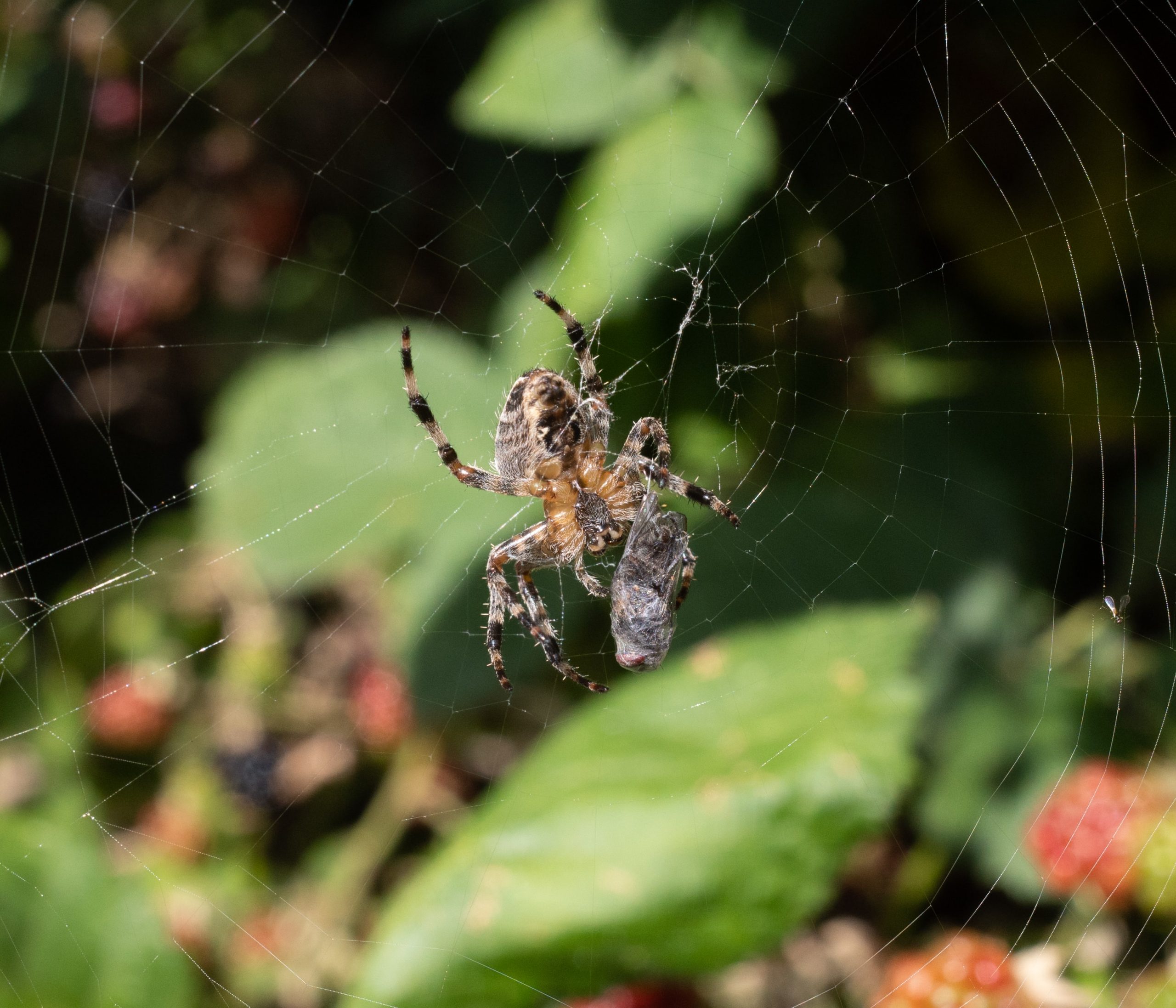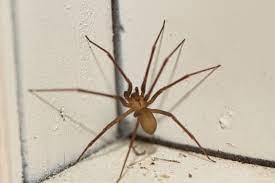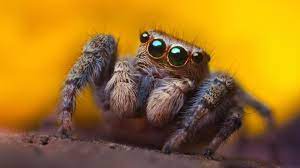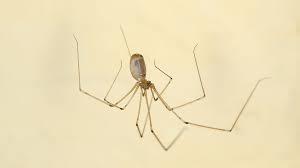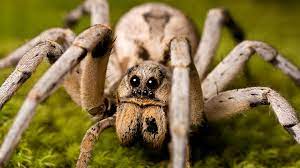Spiders
Tens of thousands of spider species have been identified throughout the world. These arachnids have eight legs and two body segments. Spiders have three or four pairs of eyes. Many spiders have poor vision, but some species of spiders, such as the jumping spider, have exceptional vision.
Spiders do not have chewing mouthparts and commonly utilize digestive enzymes in their saliva to break prey down before consuming it. Additionally, the gut of a spider is too narrow to allow for the consumption of large food particles. Almost all spider species are predators, although one plant-feeding species has been documented.
Spiders are capable of producing silk that is elastic, adhesive, and strong. This silk is used to spin webs as well as to construct egg sacs and line spider dwellings. The size and shape of spider webs vary by species: some are orb-shaped, while others are funnel-shaped; some webs are orderly, while others appear haphazard. Some spider species live in burrows rather than webs, while others are free-ranging and take refuge in crevices.
How Do They Get INTO the Home?
Spiders commonly enter homes in two primary ways: entering through open, poorly screened windows and doors and through cracks and gaps around door and window frames. Most of the time, spiders come inside the home looking for prey. The other common method of entry is accidentally hitchhiking inside boxes, on outdoor items, and numerous other things that are brought inside a home or business. Contact your pest management professional if you find spiders in your home. Your pest management professional will conduct an inspection and create a comprehensive control plan that is based on the inspection findings.
Below, are some of the well-spread SPECIES:
Black Widow Spiders
Black widow spiders are most recognized for the red hourglass shape under their abdomen. This spider gets its name from the popular belief that the female black widow spider eats the male after mating, although this rarely happens. Black widows are poisonous when ingested during the first 17 days of their life.
Brown Recluse Spiders
Brown recluse spiders have a characteristic dark brown violin marking on their back. These spiders often infest cedar shake roofs and spin irregular webs, which are used as a retreat.
Common House Spiders
The common house spider is usually the spider most often encountered indoors. It is a nuisance pest, probably more because of its webs than the spider itself. The house spider is found worldwide and is common throughout the United States and Canada.
Jumping Spiders
About 300 species of jumping spiders are found in the United States and Canada. Unlike most spiders, jumping spiders are active during the daytime and seem to like sunshine.
Long-bodied Cellar Spiders
Long-bodied cellar spiders are commonly referred to as “daddy-long-legs” because of their very long, thin legs, and as their name implies, are found in dark and damp places like cellars and basements. There are about 20 species of cellar spiders in the United States and Canada.
Wolf Spiders
Unlike most spiders, wolf spiders don’t hunt with webs. Instead, they chase their prey using their fast running ability. These spiders are often big and hairy which alarms some people, but they are primarily nuisance pests. Over 100 species of wolf spiders are found in the United States and Canada.
